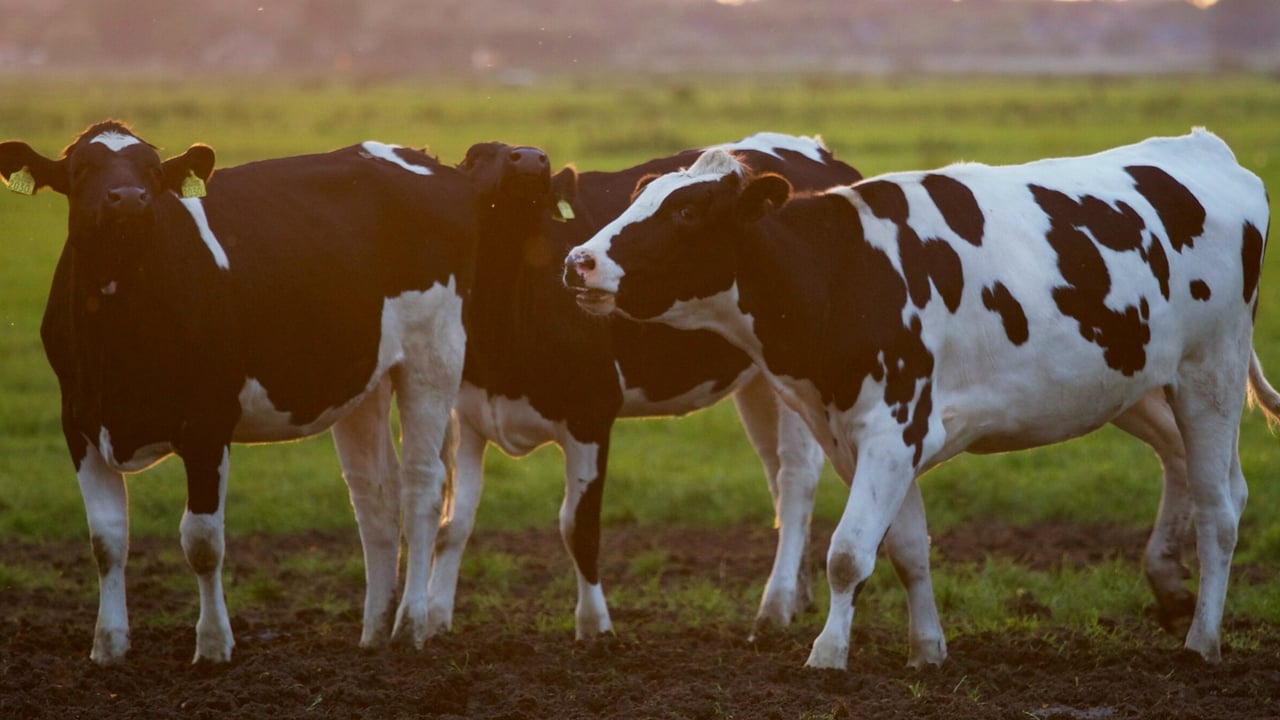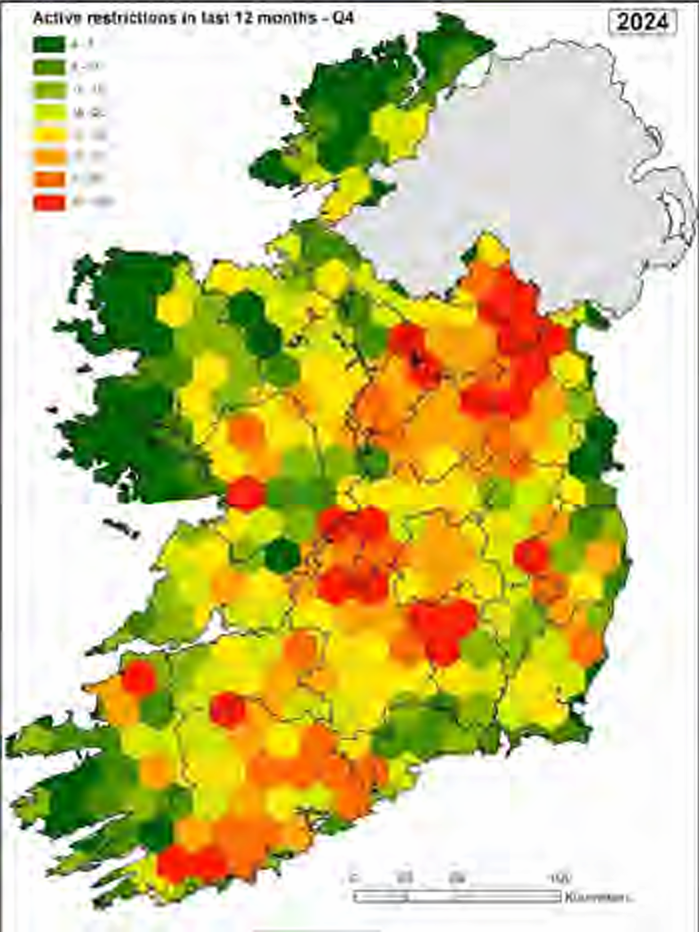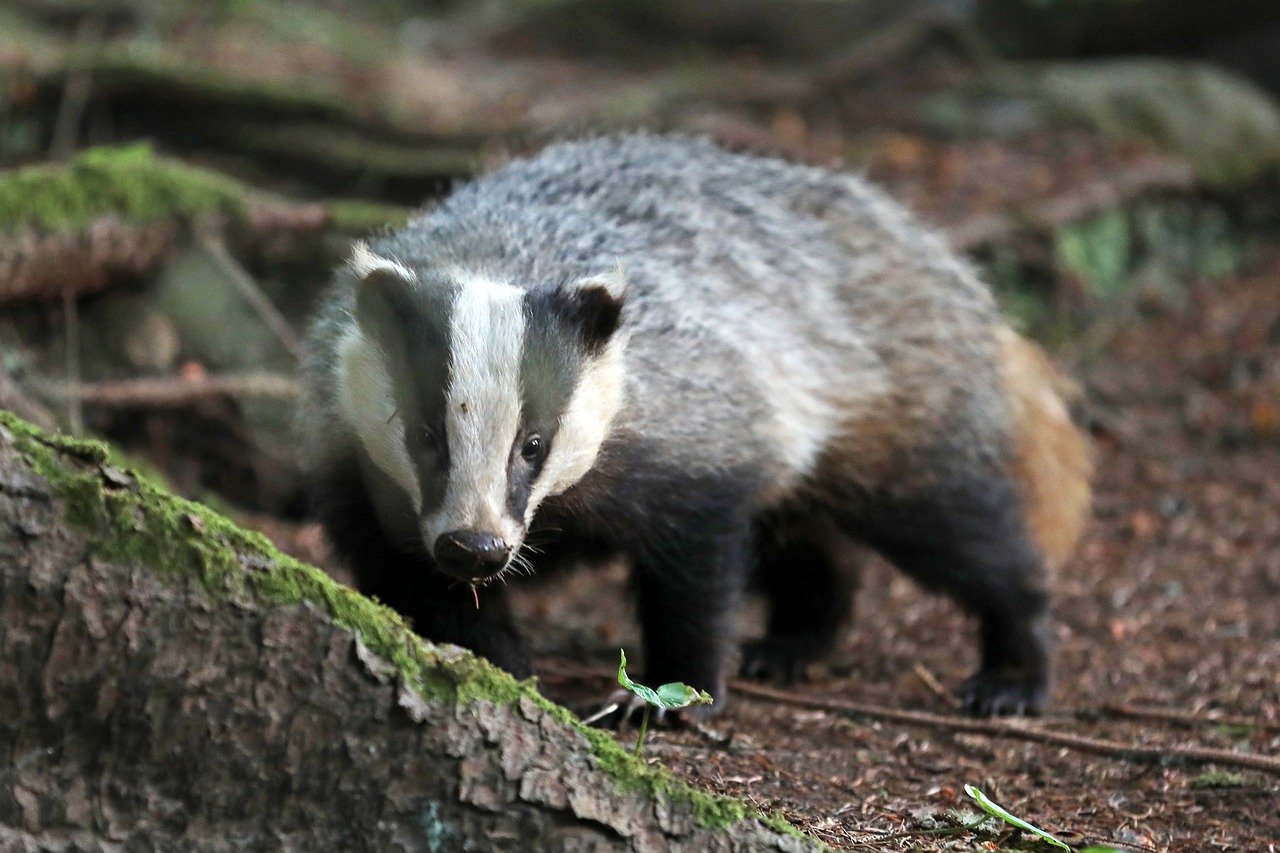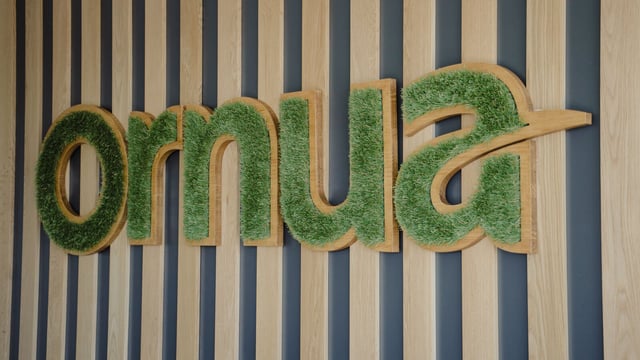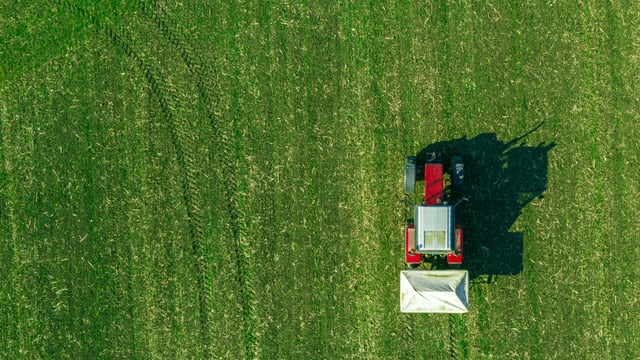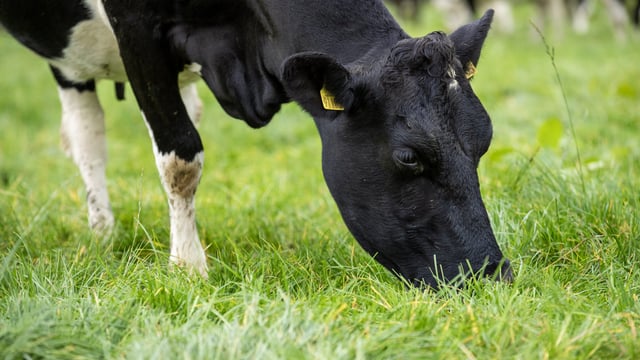€14.6m paid to vets for TB testing in 2024
More than €14.6 million euro was paid to vets for bovine tuberculosis (TB) testing in 2024.
That's according to the Annual Report 2024 for the Department of Agriculture Food and the Marine (DAFM).
TB is a highly infectious disease of cattle caused by a bacterium called mycobacterium bovis (M. bovis).
M. bovis can cause disease in other domestic or wild animals and in humans.
Since 1954, Ireland has culled around 2.5 million TB reactor animals in an effort to eradicate TB.
At the end of 2024, bovine TB herd incidence increased to 6.04% from 4.94% at the end of 2023.
The number of reactors increased by almost 44% to 41,682 in 2024 from 28,901 in 2023.
There is considerable regional variation in TB levels across Ireland, which can be seen from the map below.
Ireland’s Bovine TB Eradication Programme operates in line with best national and international scientific research and advice, according to DAFM.
A large body of peer-reviewed research has been conducted into the spread of TB in Ireland and the risks underlying its transmission.
The Bovine TB Eradication Programme is designed to eradicate bovine TB from the cattle herd in Ireland.
The programme is necessary because of the high incidence of the disease in the country; the infectivity of the disease; the potential risks to humans; interference with animal productivity; and preservation of export markets, particularly live exports.
The main elements of the programme are as follows:
- Annual testing of the national herd and/or designated categories of animals;
- Supplementary testing on a risk basis where appropriate (e.g., contiguous herds, special check tests etc.);
- Primary responsibility for arranging testing and paying for certain tests, with farmers paying for the annual round test and other private tests which account for about 70% of the testing costs;
- A compensation regime for farmers who suffer a disease outbreak;
- The payment by farmers of disease levies to help fund the compensation regime;
- A reactor collection service to ensure rapid removal of infected animals in a manner to avoid the spread of the disease;
- A programme aimed at preventing TB spread by wildlife (removal & vaccination of badgers).
The annual report from DAFM outlines that badgers are vaccinated by veterinary staff with BCG to reduce the transmission of TB between badgers.
This has been demonstrated in field trials to reduce the reproduction number (R0) in badgers from 1.2 to 0.5.
DAFM has stated that the badger vaccination programme in Ireland has a "crucial role" in reducing the risk of TB in cattle from a badger source.
The area of Ireland subject to vaccination stood at 24,874km² at the end of 2024.
In 2024, the focus was on continuing to identify as many new setts as possible to ensure good population penetration in badger vaccination areas and to continue to review operations to ensure high badger capture rates.
The badger app, which was launched in October 2021, continues to be used by farmers to pin badger activity locations on farmland.
There were 740 submissions made on the app in 2024. These locations are then followed up by wildlife officers.
Department staff have also engaged with farmers, farming organisations and state bodies to help further identify badger setts and badger activity.
In 2024, 8,123 badgers were captured in vaccination areas, of these 3,832 badgers were newly vaccinated.
Additionally, 7,267 badgers were removed where exposure to TB in badgers resulted in bovine TB breakdowns on farms.
The table below sets out the annual expenditure if the bovine tuberculosis programme.
| Annual | expenditure | ('000() | % difference 2024-2023 | % difference 2024-2022 | % difference 2023-2022 | |
|---|---|---|---|---|---|---|
| 2022 | 2023 | 2024 | ||||
| Compensation - other | €3,641 | €5,060 | €9,662 | 91% | 165% | 39% |
| Vet fees - testing | €13,574 | €13,262 | €14,623 | 10% | 8% | -2% |
| Supplies | €8,103 | €10,629 | €8,615 | -19% | 6% | 31% |
| Research | €1,131 | €832 | €1,789 | 116% | 59% | -26% |
| On farm market valuation | €22,880 | €34,748 | €54,348 | 56% | 138% | 52% |
| Valuer fees | €660 | €818 | €1,181 | 44% | 79% | 24% |
| Wildlife | €6,407 | €7,673 | €9,171 | 20% | 43% | 20% |
| Other costs | €1,052 | €1,252 | €1,218 | -3% | 16% | 19% |
| Total | €57,448 | €74,283 | €100,616 | 35% | 75% | 29% |
The On-Farm Market Valuation Scheme is the main measure for compensating farmers for the removal of TB reactor animals.
Supplementary schemes such as Depopulation Grants, Income Supplement and Hardship Grants compensate for income losses and additional feed costs due to restriction.
€64 million was spent during 2024 on all compensation elements of the TB Eradication Programme.
Receipts from Bovine Diseases Levies increased in 2024 to €8.1 million compared to €7.9 million in 2023.

